“Hey Alexa, how should I update my 2019 B2B marketing plan?” Well, Alexa may not be able to guide us just yet, but voice search is definitely one of the developments that will have an impact on B2B marketing in 2019. In this blogpost, we look at the growth of voice search, along with visual search and AI/machine learning, and how these technology trends are going to affect B2B digital marketing plans.
Voice search is growing
Of the 3.5 billion Google searches performed each day, close to one-third are voice searches. By 2020, it’s forecast that half of all searches will be voice searches. Even more significant, by that date 30% of all searches will be performed without a screen. These statistics don’t just apply to consumer behavior. Studies also show that people are increasingly comfortable talking to voice assistants right at their desks, in front to their co-workers, meaning that B2B sales are also going to be impacted.
So what does the growing use of voice search mean for B2B? It means that you will need to adjust your SEO strategy, since the search results from voice search differ from the results obtained by typing in a word, or phrase. With voice, people usually ask a proper question. So with your SEO, you need to focus on long-tail or conversational keywords. Your keywords need to supply the answer to a question that a searcher might ask.
Use your FAQ pages and blogposts to highlight your conversational keywords, once you determine what they should be. In your blogposts, make sure to include sentences that are direct answers to common questions. And remember that Google prefers to look in long-form articles for answers to voice queries, rather than in short-form content.
New applications on the horizon for visual search
With visual search, users can use an image to launch a search, viewed via their phone’s camera. You could point your camera at a building, for example, to learn about its history. Or point it at your friend’s shoes, to find out where you can buy a similar pair. Or point it at a bird to find out the species, etc. Google is aiming to lead the visual search market, with Google Lens, which it describes as “a visual browser for the world around you.” It’s available as a downloadable app for supported phone models. Visual search is expected to have a significant impact on B2C retail, specifically in the home décor and fashion areas.
In the B2B environment, applications for visual search are still taking shape. So far, uses include using visual search to source machine parts, or other materials. Visual search can also be used to manage inventories, or incorporated in an automated order process. The healthcare sector is also finding ways to incorporate visual search. IT scientists are looking into how to use visual search to sort and analyze the reams of images and data that healthcare enterprises generate, for example, enabling automated analysis and benchmarking.
Dermatologists are already using visual search to enable faster diagnoses and improve patient care. Dermatologists can submit an image of a patient’s skin condition (i.e. a potential melanoma) via an app, which uses visual search technology to compare the image with thousands of pathology-labeled images. Similar, diagnosed images are then sent to the dermatologist, who is able to make an informed diagnosis and treatment plan for the patient, even if the condition is one they’ve never seen before.
Better personalization with AI and machine learning
As AI and machine learning technologies advance, so does the potential to truly personalize the B2B sales and customer experience. New ways to crunch and analyze data mean that B2B marketers can know precisely what prospects want, and when they want it – and provide it to them. AI-based algorithms, for example, can search through LinkedIn profiles and provide a wealth of data on prospects. These algorithms can also identify patterns in historical transaction data, trending sales, social media feeds and more, which can inform predictive marketing and sales models.
And the entire inbound portion of the customer journey can be automated, right down to the chatbots that engage with prospects just like real humans. What’s still to be determined: where, in this new environment, does the salesperson fit in? At what point should the interaction switch from automated (albeit with a human “touch”) to a real person? As the sales/marketing silos crumble and sales and marketing finally align, this is one of the new questions to be answered.
This is just a quick look at some of the technology trends that are changing the B2B marketing landscape and is the last of our blogpost series on what to expect in 2019.
Previous blogposts of this series:
B2B marketing trends to watch for in 2019
B2B content marketing trends for 2019
For B2B marketers, it can feel like an ever-changing world. Sometimes it can be beneficial to connect with the experts, to gain new ideas and fine-tune your approach. At Living Stone, we’re experts in B2B marketing, with experience in all aspects of digital marketing and marketing technology.
We’d be glad to set up a no-obligation discussion, to talk about your challenges and needs and the way we could support you.
Contact us to learn more.



